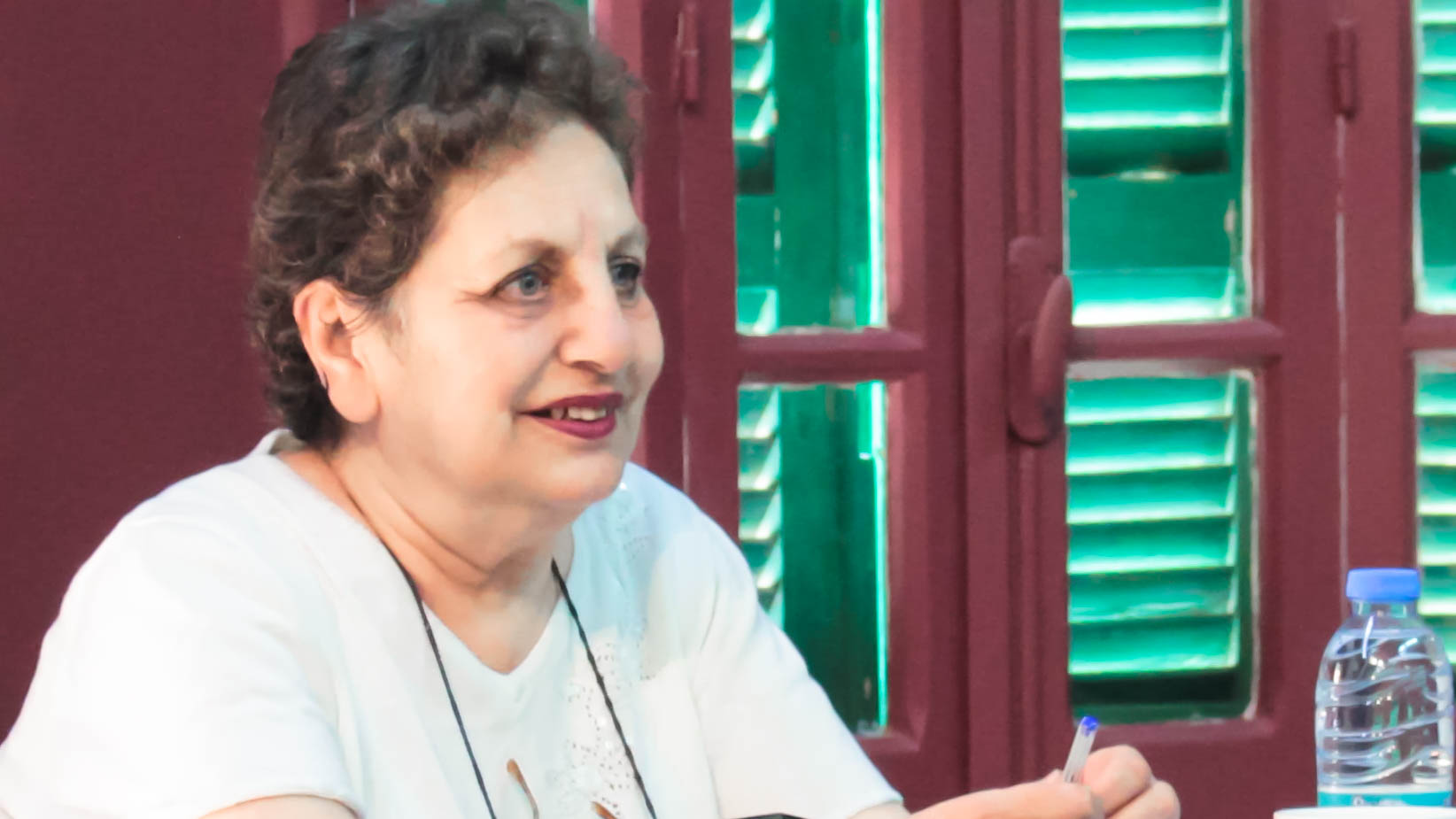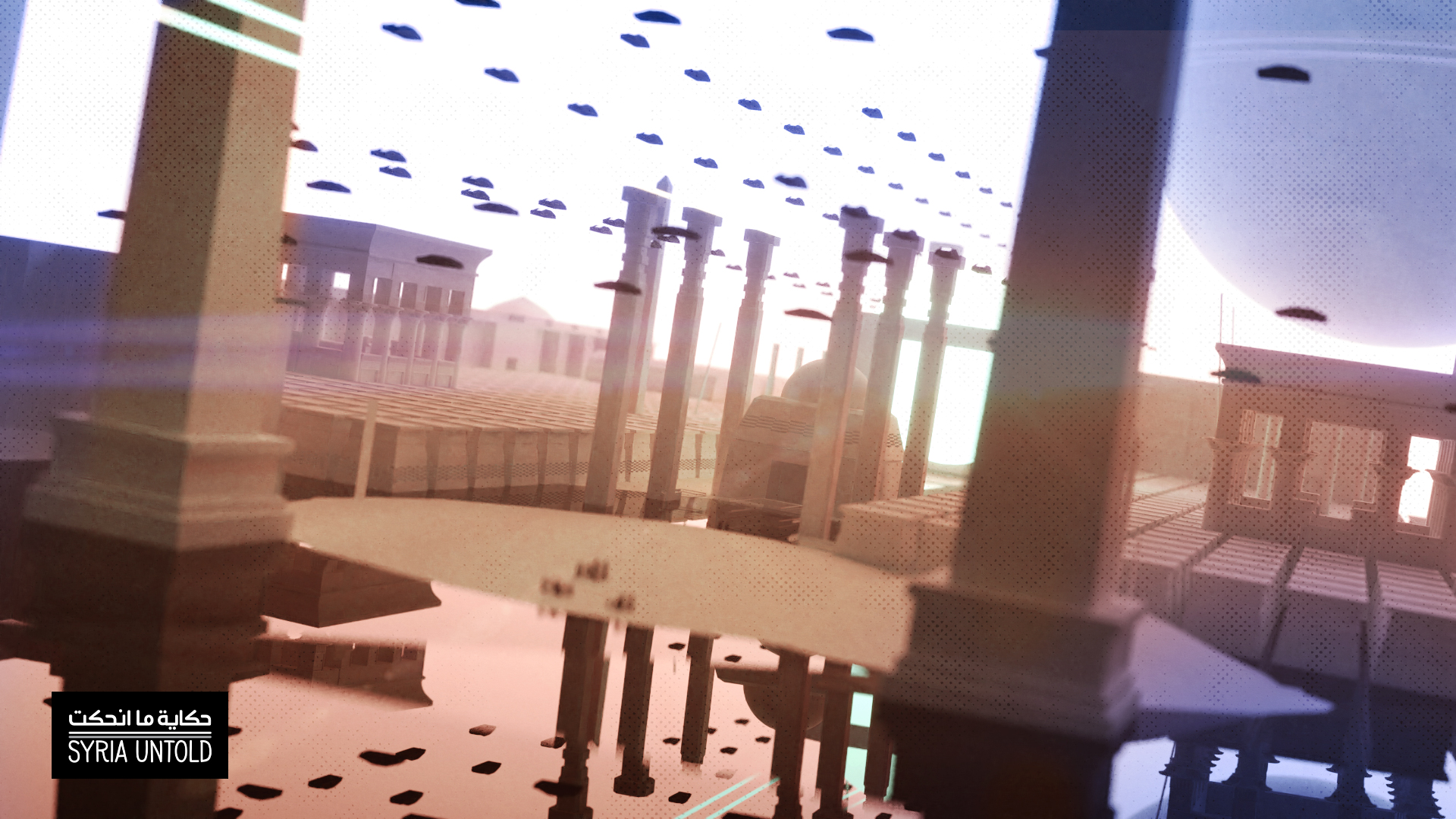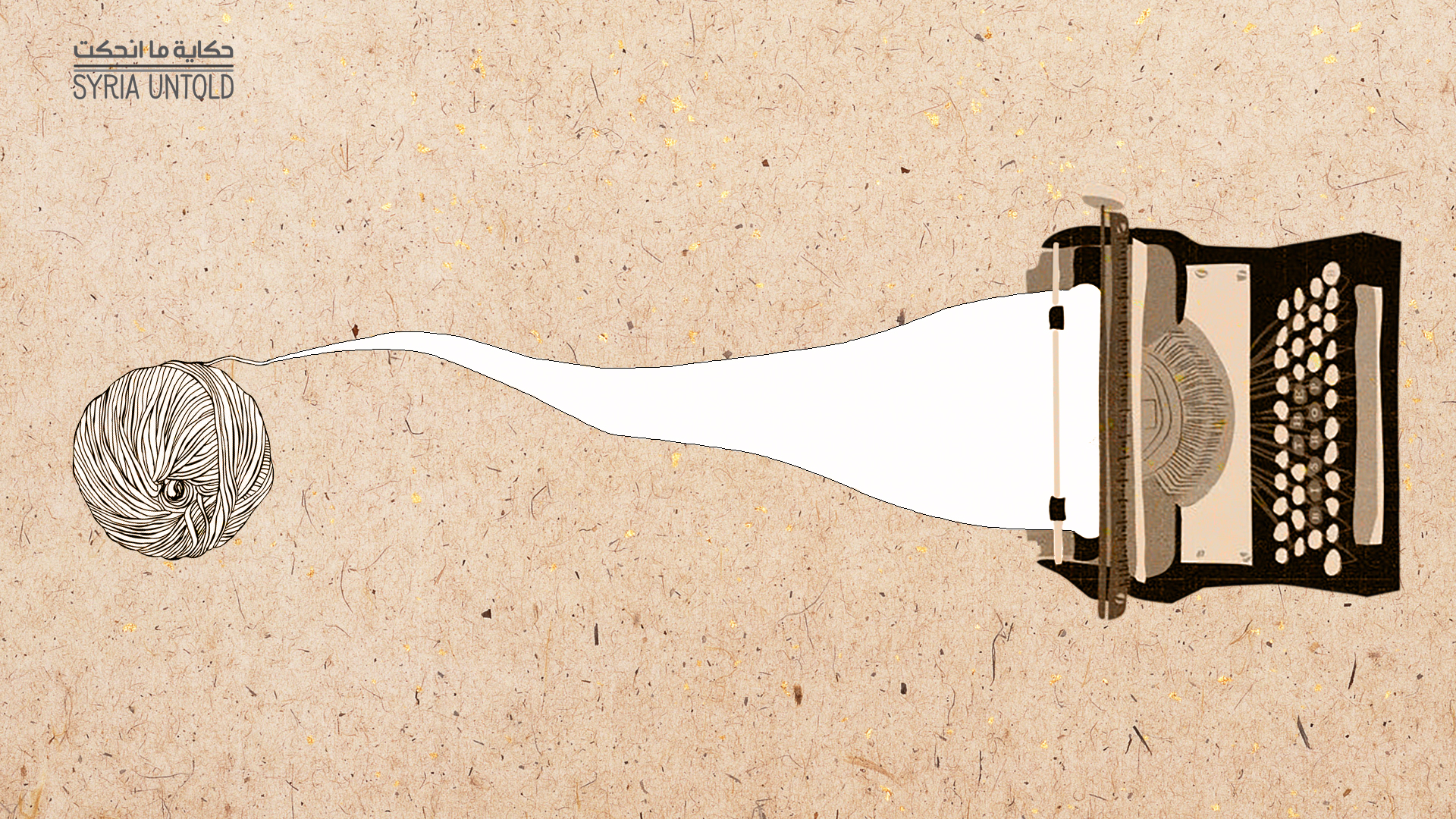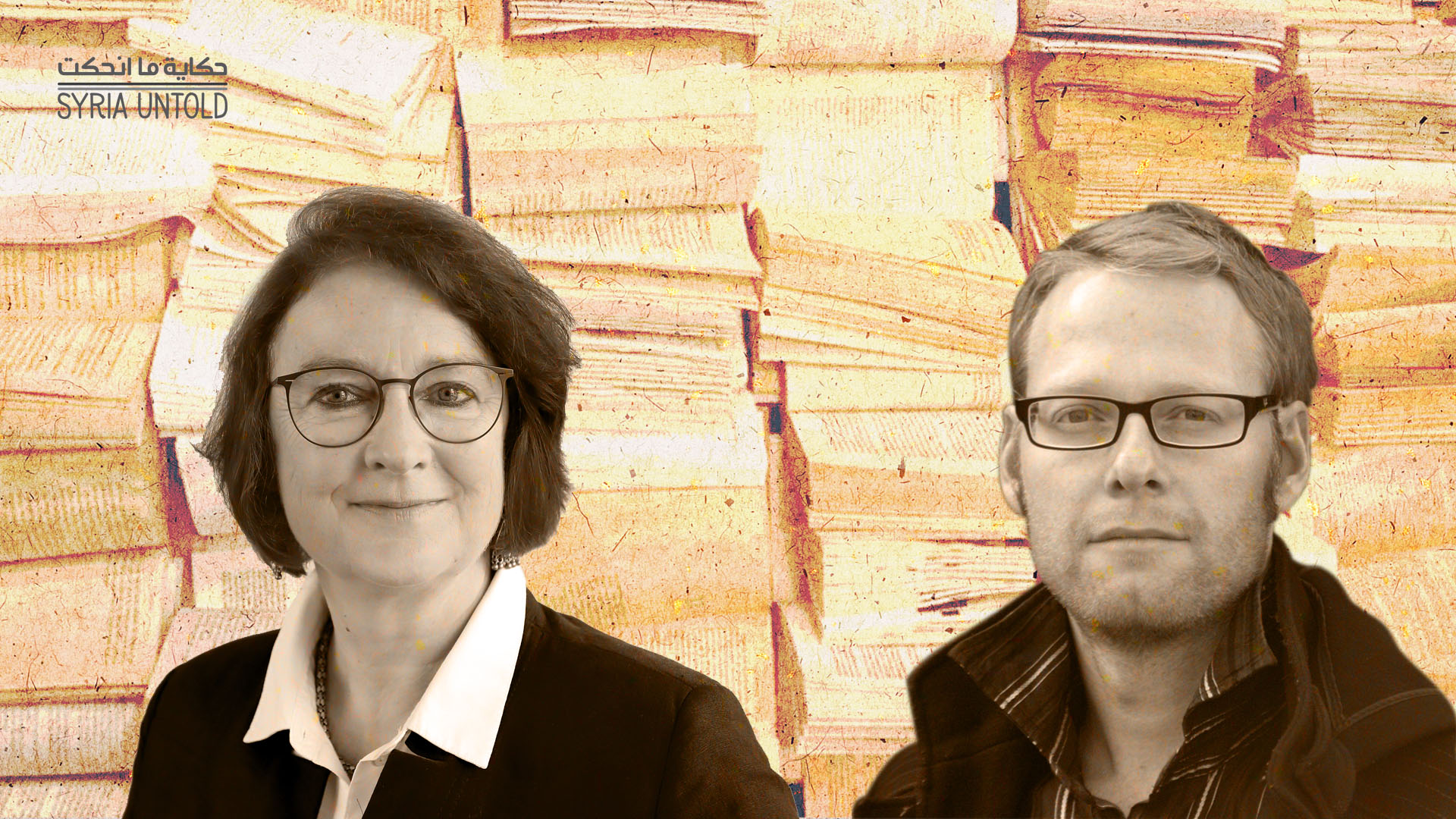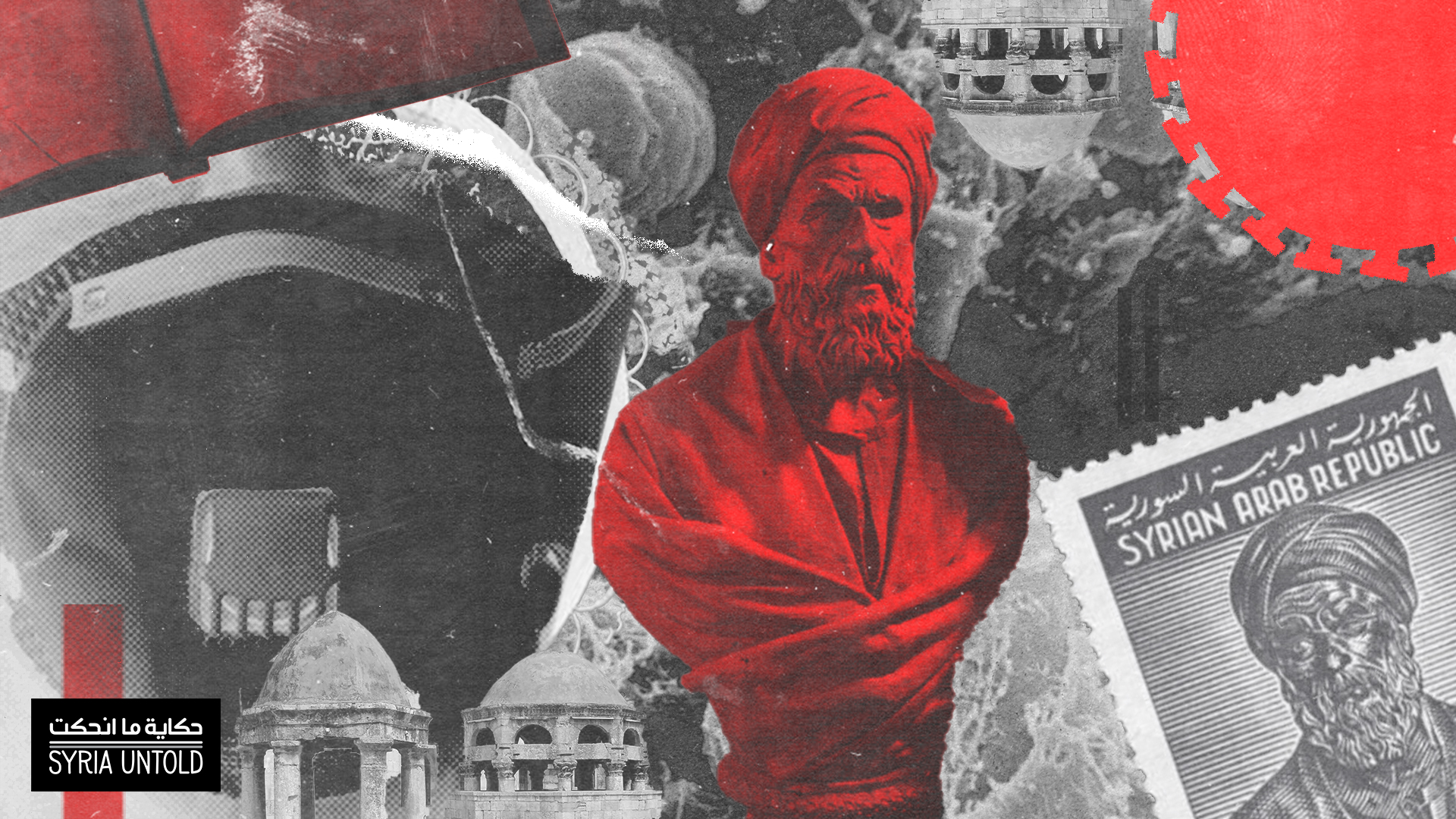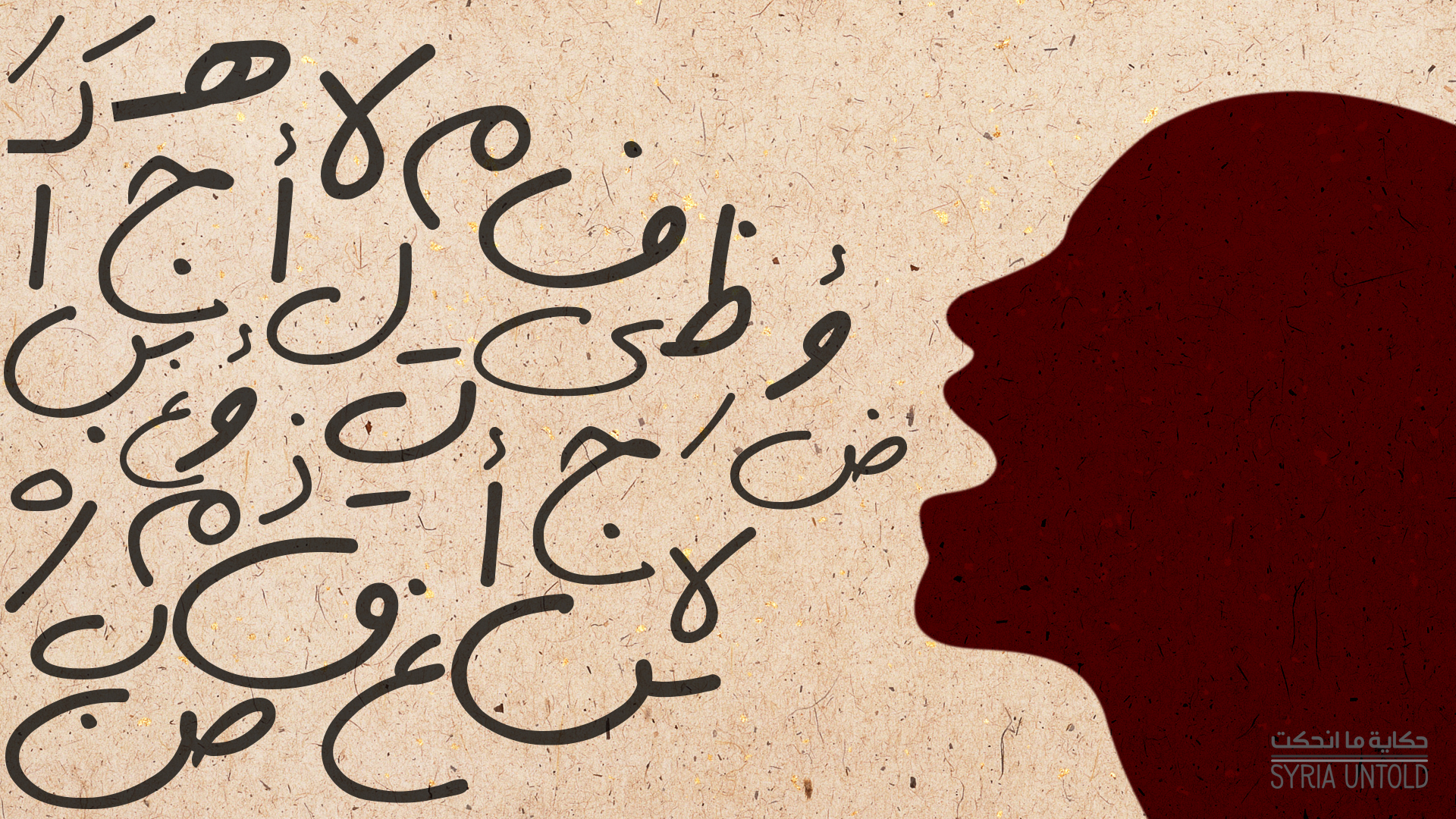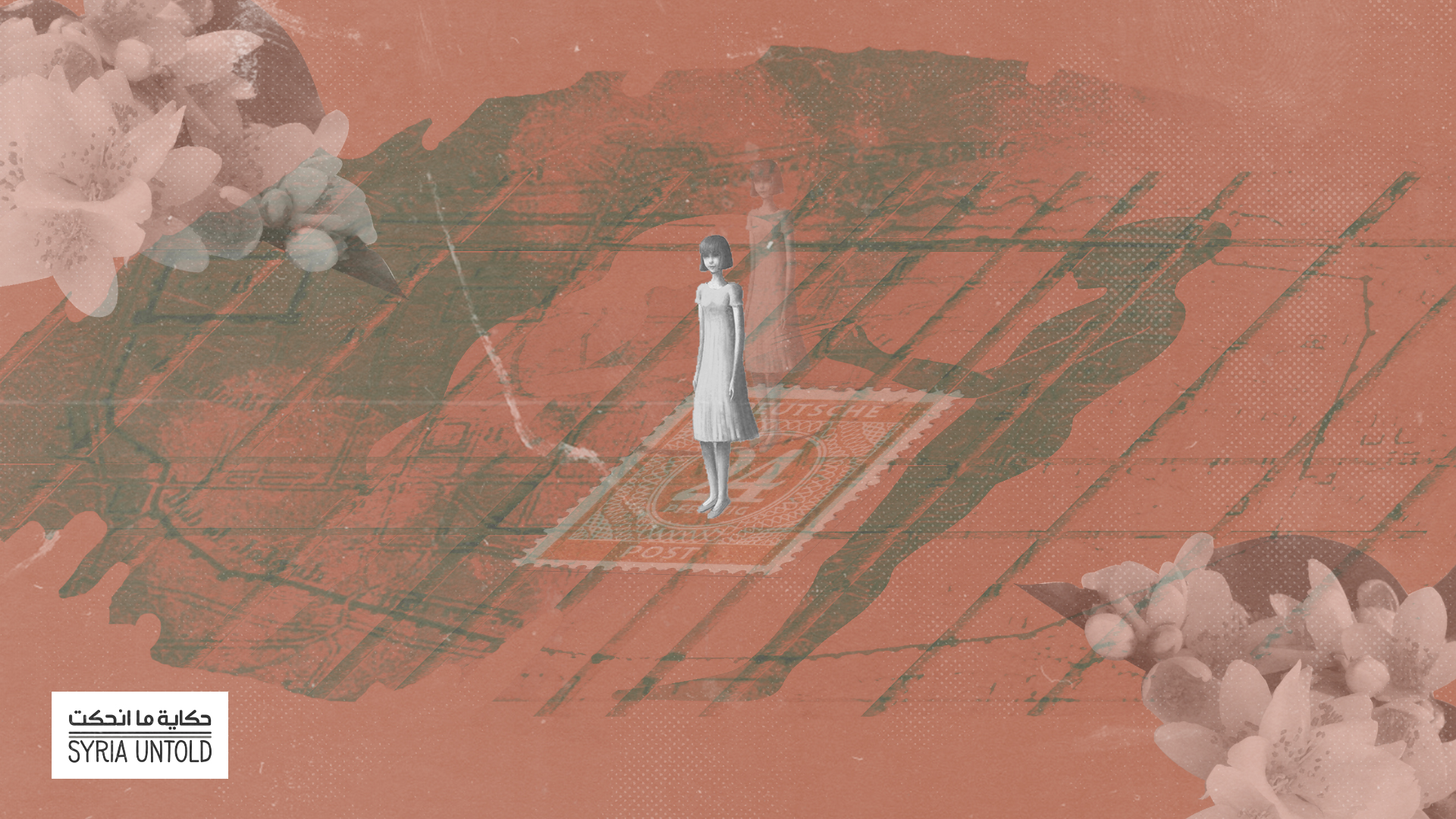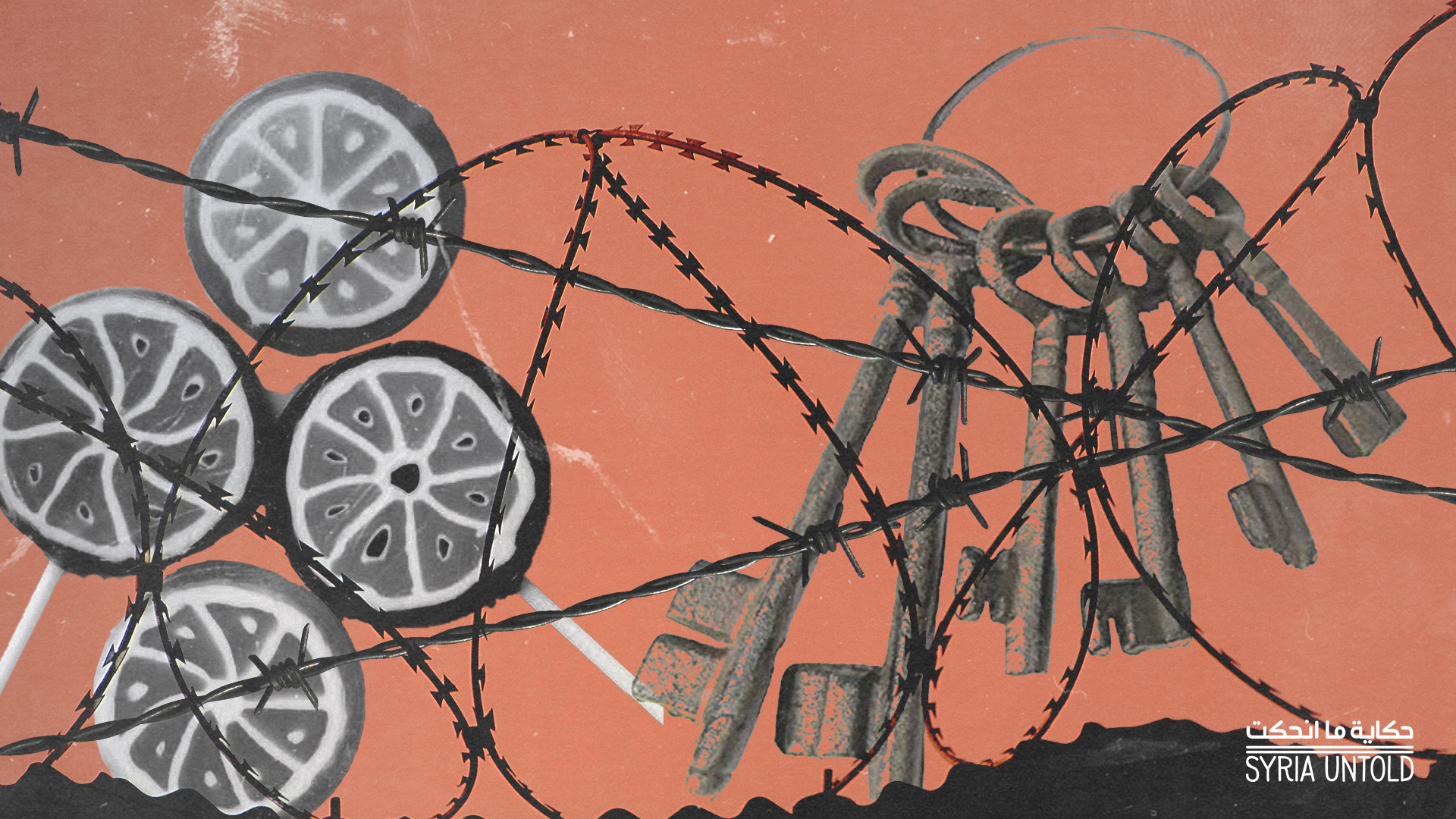This introductory essay is part of SyriaUntold's series on Syrian theater. Read this piece in its original Arabic here.
People familiar with the past decade of Syrian artistic and literary production would be amazed by the sheer amount of works and how scattered they are, expressing the difficulties Syrians have and still are experiencing. There are novels, poetry, prose, plays and performances, as well as paintings, multimedia works, sculptures, installations and short and feature-length films, among others.
Syrians are clearly shouting, “We exist.” They seek to leave traces of their existence wherever they go. They long to express the things they have gone through, for fear of these events being consigned to oblivion.
Memory and documentation are two important topics. But the questions that may arise today, especially for Syrians in the diaspora, are: What next? What do you want to talk about? And to whom do you address your words? As for those still inside Syria, there is yet another question that must be raised: What role does theater play today?
Science fiction in MENA: An artistic tool for change
26 April 2021
Questions about growing change in Syrian narratives
12 January 2021
To talk about Syrian theater today, we should start by stating the obvious: this artistic production confirms an accumulation of cultural heritage carried by this population, and this heritage was ignored by the other, except in the case of rare participation in international festivals.
The challenges that Syrian artists face today are similar to those of the Iraqi and Lebanese artists who came before them. When Iraqi and Lebanese intellectuals left their homelands and scattered around the world, some of them produced works in the diaspora while others did not. Still, they left a far reaching impact and developed their perception of theater.
Theater is a collective art that has complex requirements. It is not easy for someone to work as an artist when their art form is not an individual act. This is why it cannot be compared to individual arts and novel writing, or even to cinema. This is why there are artistic forms, especially visual arts, that have evolved rapidly in recent times, especially during the coronavirus lockdown.
As the years passed by since 2011, the Syrian crisis lingered until we started talking about the war generation, an entire generation eager to utter and express its feelings. But is it possible to list and monitor all that has been produced during this period? Theatrical texts abound; some of them have been published while others have not. There are playwriting training programs that encourage theatrical productions, and performances here and there that are difficult to pin down given their extremely uneven artistic and intellectual levels.
Since the beginning of the Syrian crisis, theater creators have resorted to “independent” financial support, and there are institutions that have played a major role in the life of Syrian theater in particular. But the questions that arise in this context are: What are the production mechanisms that set the stage for Syrians to express themselves abroad? Can they be pinned down or described? Furthermore, a gap has naturally started to grow (and is still growing) between the Syrians still living in Syria and those in the diaspora.
It should also be noted that the crisis facing Syrian culture and arts is not recent but the result of a long accumulation of factors that we will try to touch on, all the while establishing a comparison between what is called “the inside” and “the outside.”
This is why we must step back in order to bring forth some reflection about this crisis, some of which is related to theatrical production, and some to theatrical vision and freedom of expression, and of course to the form and content of script writing.
Theater in Syria still lives in the past in terms of theatrical spaces, formulas and forms of production. The conditions under which the fathers of Syrian theater have practiced their art are very different from those we witness today. Among the main characteristics of this crisis are the emigration of the theater community, production difficulties in terms of funding, administrative and security complications, a reluctance to write for the theater (Saadallah Wannous’ texts have been an exception since the 1990s, as others stopped writing before that) and the orientation towards what some consider to be easier and more lucrative practices.
Syrians are clearly shouting, “We exist.”
However, theatrical writings of young Syrians have emerged during this time, many of them graduates of the Higher Institute of Dramatic Arts, which may indicate something new. The old names known before the crisis no longer exist—most of them passed away or produce far less than the new generation of playwrights. Remarkably, there are also names of new young writers that cannot be pinned down due to the dispersion taking place at the cultural stage. Here, we are referring to dispersion at the geographic as well as the psychological levels. It is worth noting that Syrian theater of the 1990s has receded or, at best, has remained stalled for a long period of time.
Theater and the state
Since the 1960s—meaning since the political topography that prevailed in the second half of the last century—we have become accustomed to artistic work in Syria falling under the administration of the state and being part of its annual or longer-term plan. This reality has been in place for decades, and it was comfortable for many artists, as artists and intellectuals were completely dependent on the official institution in terms of cost and logistics. All they had to do to produce artistic works was to focus on the art they were producing.
During that stage, the so-called theatrical institution appeared: equipped theaters (their number is limited, but they exist; most of them were cinemas converted into theaters), then the National Theatre was established as new structures emerged such as the Workers Theatre, the University Theatre, the Military Theatre and the cultural center theaters in Damascus and other governorates. These institutions played a major role in popularizing culture and theater. The University Theatre has also played an important role in the 1970s in shaping members of the theater community, as a number of its graduates became stars in Syrian theater and television: Abbas al-Nuri, Rashid Assaf, Salloum Haddad, Bassam Koussa and others.
What did exile change in our narratives?
26 January 2021
Returning to Abu Alaa al-Maari in our year of plague
13 May 2021
After the opening of the Higher Institute of Dramatic Arts in 1977, theater education became available to the new generation. Many students graduated from the institute, though they rarely worked in theater; when the television market flourished, they quit theater altogether. An opera house was also built offering more venue options for theatrical performances. A theater festival convened every two years, and it played a great role in stimulating interaction with Arab and international theater in the beginning.
This is in terms of production. As for the political, social and human orientation, theatrical production at the time expressed its vision of the world and the major political events that the country was going through. Among the most important writers who gave performances in this framework back then were Saadallah Wannous, Mamdouh Adwan and Farhan Bulbul. The most important directors were Asaad Faddah (who was the Director of Theaters in Syria for a long time), Naila al-Atrash, Hassan al-Awaiti and Fawaz al-Sajer.
In terms of freedom of expression, harassment used to happen, but intellectuals were respected and they clearly claimed this position. It should be noted that the topics that this theater dealt with were mostly political; in my view, the individual and human factors were neglected at the expense of this integrated vision. This is a topic that requires deep research, but it explains why the new generation opted for a revolution against the previous one and focused on themselves. Playwriting went through a real crisis.
At that time, the main competitor of the National Theatre—television production—hadn’t yet come to the fore. While this production (drama) was entirely local in the beginning, it soon entered globalization and established specific production conditions.
What do playwrights write about?
The first generation tried to put forth a comprehensive political vision while neglecting the role of the individual, or the “I.” This is why we see, for example, that they wrote stereotypical characters, suggesting a general vision of society without discussing the individual’s conditions.
Syrian theater established itself widely in its golden age, which includes the 1960s, 1970s and the early 1980s. It is during that stage that the important plays were created, and that written theater flourished, with writers, directors and actors becoming famous in the Arab world and even on the global level.
Finally, it must be mentioned that the first issues of Theatre Life Magazine (al-Hayat al-Masrahiya) were published in 1969 under its first editor-in-chief Saadallah Wannous, followed by Nabil Haffar. However, all this didn’t last long. The administrative and technical system soon began to sag because it didn’t go through any development—the existing frameworks remained as they were in the 1970s and 1980s to date, while new factors entered and influenced the selection of the artistic and administrative decision-makers.
From the 1980s onwards, it became clear that a new life needed to be breathed into the frameworks and laws governing theatrical art in Syria. It is as if these frameworks turned into a burden on culture and art. Conversations began to focus on the need for change at the national and regional levels. This is when we began to hear about the demand for an independent art.
The issue of continuity
So from the 1980s, Syria’s theater practitioners began thinking about something new. But what would that new thing be, and how would it relate to what already existed? Would it be a continuation of the old, or a revolution against it? Would it coordinate with the existing reality, or turn its back to it? While there were divided views on such questions, everyone was aware of the problem, even if the matter was limited neither to theater nor to the artistic or educational institutions. This rigidity greatly affected the content of art.
Before the crisis, all factors were indicative of the problem the theater was experiencing despite serious attempts led by playwrights and intellectuals to overcome intransigence and be open to contemporary theater. Such attempts were exemplified by the formation of young companies, the search for alternative spaces, the establishment of private institutes and openness to different forms of performances such as street theater, visual theater and new forms of writing.
From the 1980s onwards, it became clear that a new life needed to be breathed into the frameworks and laws governing theatrical art in Syria. It is as if these frameworks turned into a burden on culture and art.
At the beginning of the 21st century, a form of developmental theater called interactive theater appeared, its teams mainly composed of graduates from the Higher Institute for Dramatic Arts who received training in the field. This theater worked within society and rural areas, and tried to play a role in the process of development, especially in education and the development of remote areas. These were private, independently funded initiatives.
The earthquake—or a “tsunami,” as it was called by Tunisian director Fadhel Jaibi—that hit Syrian theater had internal and external reasons, old and new foundations. It affected those who remained in Syria due to the lack of prospects, but it also had an impact on those who left Syria, regardless of the reasons behind their departure. For many of them, circumstances had changed, and they soon had to respond to the question: “Who is Syrian?” To answer this question, they used what they carried with them, in their memories of a real or imagined reality. They had to adapt to a new world, and to different living and productive conditions, dealing with different references, each according to their circumstances and whereabouts.
On the other hand, many Syrians pursued art as a profession in their countries of asylum, as they tried to express and find a new status for themselves, which was not easy. Only a few have thus far managed to do so.
In this vein, it should be noted that Syrian literary and artistic production was previously purely local, meaning that Syrians were isolated, willingly or unwillingly. It is useful to conduct a study on the translation movement in the past and the translation movement now. The abundance of translation raises the following questions: What happened? Has the world started asking who the Syrians are, what their artistic and literary identities are? There is no doubt that various people around the world have a desire to discover “the Syrian.”
I think that the only Syrian theater practitioner whose work knew some sort of continuity in recent years, is director Omar Abu Saada, through his partnership with playwright Mohammad al-Attar and scenographer Bissane al-Sharif. While in Damascus, Omar Abu Saada started presenting independent theatrical works, though he wasn’t the only one, as there is also the work of director Oussama Ghanam. Alongside Mohammad al-Attar and his team, Abu Saada worked in several fields, including interactive theater, and they accumulated experiences. They worked in Lebanon and then in Europe using the experience they gained through interactive techniques to adapt texts such as Antigone and The Trojan Women, as well as their knowledge of classical theater and how to address donors.
On lust for the Syrian narrative
02 February 2021
Songs of nostalgia in New York City’s long-lost ‘Little Syria’
05 March 2021
Meanwhile, the geographical dispersion makes it nearly impossible to keep track of everyone’s production. While Naela al-Atrash was teaching theater in the US, she directed Arabic plays, including Wannous’ The Drunken Days (Al-Ayyam Al-Makhmoora), in English with her students. Also, while actress Nanda Mohammed works in Egypt, where she settled, she also takes part in many works in Europe. This is also the case for Hala Omran, Amal Omran, Ramzi Choukair and Mohammed al-Rashi, among many others. How will these people keep going, and will their theater be considered part of Syrian theater?
The crisis before the war
In this file, we have tried to examine what is being presented on Syria’s theater scene. The National Theater, among other theatrical institutions, produced many plays, most of them with the same ruthless mentality, because this institution works as a watchdog rather than a producer and facilitator. Add to this the production difficulties.
The Higher Institute of Dramatic Arts, which is an educational institution, played an important role in the beginning, but for the same reasons, this role largely receded. The same happened with Theatre Life Magazine. Changing the people responsible for the performance of these institutions greatly affected the scientific and technical normality. What we have learned lately is that collectives have tried to establish different types of frameworks in Damascus and other regions, and these local initiatives need moral and financial support to be able to continue and evolve.
However, there are some exceptions that are still working or trying to work independently. Chief among these is the Damascus Theatre Lab, which is an independent institute with independent funding opened in Damascus and run by Oussama Ghanam. The lab trains students and graduates, and produces independent theater performances. There is also an independent theater institute in Jaramana run by Samir Othman, which trains students and presents theatrical performances. In Latakia, there is a private university that teaches theater.
For many years, an independent theater has been advocated in most Arab countries, including Syria. While independent theater emerged during the crisis, it was initially shy, but with the support of Arab and foreign donor institutions, it tried hard to resist the imposed state of involuntary disappearance. State institutions have decided to only opt for supporting performances with agreed-upon content or agreed-upon people.
Calls for an independent art, especially freedom of expression, were and still are among the issues raised everywhere. Some countries have found different and varied answers to this problem. Of course, this question was not raised in isolation from the globalization of culture and technological developments that have shaken the status quo.
Getting out of Syria
There were clear and important aspects of the new production in neighboring countries. In the beginning, Beirut was a point of attraction for Syrian artists who sought refuge or used the Lebanese capital as a stopover. Syrian actors were even seen in Lebanese artistic spaces, such as television drama, which played a great role in introducing both Syrian theater and Syrian talents.
The first to introduce contemporary Syrian theater was the Douwar el Shams theater in Beirut, with its “Miniatures: A Month for Syria,” a forum that ran for an entire month in 2013. The forum presented concerts, films screening and performances, in addition to installations. The opening show was The Small Rooms by Wael Qaddour, whose later works and writings made it to Jordan and France. The theatrical part of the forum had wide political connotations, such as in The Observer, adapted by director Yamen Mohamad from the short play Victoria Station by Harold Pinter. The dance companies Sama and Koon performed Cellophane, in which director Ossama Halal tackled the issues of repression and migration in his country. Then there was a second event at the same theater entitled “Agora,” to introduce several theater troupes in the Arab world. It presented the works of four theater labs: Damascus Theatre Lab (Syria), Zoukak Theatre Company (Lebanon), The Lab of Living Theatre (Tunisia) and Daba Theatre (Morocco).
With what do we write and for whom?
The “Minassa: Platform for Today’s Arabic Theatre,” was also organized, drawing on the changes brought about by the Arab revolutions. It brought together theater practitioners, visual artists and thinkers from different Arab countries, as performances followed the discussions.
Some works were also presented in Jordan, such as The Shakespeare Tent by Nawar Bulbul, performed at the Zaatari Refugee Camp. When Farah Cries, a project by Syrian playwright Mudar Alhaggi (currently based in Berlin), was organized in Amman’s Al Balad Theater in 2014, along with a workshop titled “Attempts to Write the Disaster, with artists from Syria, Lebanon and Jordan.
Among the most important of these works was The Trojan Women, presented in Jordan by Omar Abu Saada and Mohammad al-Attar in partnership with Nanda Muhammad as a trainer and actress, and Bissane al-Sharif as a scenographer, adapting the text of the ancient Greek play to the stories of Syrian women forced to emigrate to Jordan. The show subsequently travelled to Lebanon and Europe. That same group later staged a production of Antigone—like in The Trojan Women, they adopted the unique method of working with refugees to build the theatrical work. This method started with exercises in social interaction to create a relationship with women who had no prior theater experience.
Here, it is important to mention the role of Arab funding organizations, especially the ones that supported young theater makers and discovered new talents. Though it is not possible to list all these talents, it is worth highlighting this new freedom that they have enjoyed in their productions due to these programs.
In terms of playwriting, there was and still is an abundance of written plays despite the severe difficulties and compelling circumstances that Syrians face. This is the result of several opportunities that allowed young artists to benefit from playwriting workshops and support programs, such as Citizens Artists(mainly funded by Tamasi Collective), Al Mawred al-Thaqafy, Arab Fund for Arts and Culture and Ettijahat-Independent Culture. There have also been numerous playwriting workshops in recent years, including at the Royal Court Theatre’s workshop in Beirut with the support of the British Council, and several workshops organized by Citizen Artists under the supervision of Marie Elias, with playwrights resident inside and outside Syria.
The body, between event and memory
25 January 2021
A decade on, how can we work to free Syria’s detainees?
16 April 2021
The printing and publishing movement is weak, so it is impossible to list all the available texts. But because I personally followed and supervised many workshops, I will try to tackle some of the aspects of the new writing, specifically writing for the stage.
What are the characteristics of the new Syrian theater?
Syrian theater (as a script and a performance), as in many countries in the Arab world, is facing real problems, chiefly the lack of reference and the substantive gap with the previous generation of the 1960s and 1970s. The new generation is not a natural continuation of the previous one. What is being produced or written for the theater today indicates that this generation is unable to rely on or express the complex present, such as the absurdity of life and the urgency of big and fateful issues. This matter may constitute one of the most important difficulties facing playwrights nowadays. Furthermore, the subjects that these playwrights address started to change and evolve after the nostalgia and documentation phase, due to the possibility of expressing oneself freely.
What will these young playwrights present on stage and to whom will they write? I think this is an urgent question they should be asking themselves.
What we are currently seeing in their scripts is that it is impossible to present an integrated picture of the political and social situation that Syrians are living, regardless of where they are.
Recently, in a workshop organized and supervised by the Citizens Artists with playwrights from inside and outside Syria, the most important topic at hand was disorientation and the question: What are we going to write about? Mudar Alhaggi's Your Love is Fire and The Return of Danton both address with these questions. The feeling of disorientation has bordered the point of madness in some texts, such as those of Haya Hassani in Damascus, Daniel al-Khatib in Tartous, Hassan al-Mulla and Omar Jabaai in Beirut, among others. The question of identity is also still heavily present: identity as belonging and identity as citizenship.
Revolution against ruthlessness
I will describe the aspects of two recent plays that have caught my attention: When Farah Cries by Mudar Alhaggi (published by Dar Al-Farabi in Lebanon), and Your Love is Fire, in which Alhaggi tries to raise the theme of the revolution through plays that deal with this issue. He uses two levels of language: the formal for the writer and the colloquial for the parallel dialogue. The first text is very close to the idea of the revolution and raises the following question: What is the meaning of the revolution? This might be the most important question that can be asked. The second text and following raise a practical question about what to write.
When Farah Cries is based on a true story. Its main theme revolves around levels of change in Syrian society. The personal story takes place in parallel with the story of the country and the revolution. The story takes place in mid-2012, when the young Farah (a graduate of the Faculty of Fine Arts) leaves Damascus for Amman to join her beloved Ahmed, a peaceful activist, who was forced to leave Syria to escape the danger of arrest. As she departs, Farah tries to rid herself of the guilt she had inherited from her father and her community. Farah, who stopped practicing sculpture years back, takes a “revolutionary” step by deciding to leave her father to join her lover, but it is not long before she discovers that she was standing on the threshold of a new revolution and a new departure, the character of which she is yet to truly know, but which she is sure will lead her to go back to sculpture.
Another example, considered to be one of the most important plays written in this period—I mean here in terms of writing for the state—is I Can’t Remember by Wael Ali, who lives in Lyon, France. The play, written in colloquial Arabic, is about a meeting between an actor and a former political prisoner. The text itself is full of poetry because it moved away from realism, and yet it still gives examples of the reality lived by a prisoner while raising the issues of memory, of moving on and resisting the pressures of prison.
I Can’t Remember is an attempt to reconstruct the biography of Hassan, a musician and political prisoner in 1980s Syria. The life of the witness is governed by many interruptions and trials: clandestine work, covert action, arrest, imprisonment, emigration, asylum, living in a new place and restoring the country after the revolution, which in turn is plunged into a cycle of violence. Can this biography really be reconstructed? The play approaches the question of violence through its effect on memory, oneself and the relationship with place or country.
Language is a part of this revolution
I think that most of these young writers felt that the colloquial dialect was closer to both their subject and themselves than formal Arabic, and this may be part of their revolution against the past. The language of the theatrical and the literary text—and I might as well use another phrase, which is “the poetic character of the text” or “writing ingenuity”—are not determined by the linguistic level and the use of formal Arabi, but rather the capacity of producing a concise theatrical language. Language in theater has a specific use; it is the choice of words and expression that creates the poetic character of a play.
As for the literary character of the text, theatrical writing is moving further from literature by the day to become more like scenarios or film scripts. The linguistic level is totally related to the content of what is said and the theatrical situation. In the cases we have discussed, I completely understand the linguistic level that has been chosen because it is organically related to the context of people’s daily lives. In such cases, the choice of formal Arabic might seem to reflect a kind of deportation, pedantry or even alienation. On the other hand, the spread of television and film writing has indeed affected theater’s liberation from the literary condition and opened the door for a wide choice of linguistic levels.
In this vein, it should be noted that the use of colloquial language limits the ability to understand the text for those who do not understand Syrian dialects.
Funding mechanisms
We conclude here with another issue Syrian playwrights have faced, especially in countries of asylum: funding mechanisms.
What does this new issue represent? Should these playwrights remain marginal to the new society in which they live as refugees, or should they engage in the new framework and raise different topics? I think that this question converges with the first: With what do we write and for whom?
Who funds independent art projects? What serves as a ground for this art? By ground I mean the infrastructure, the institutions, spaces and people from which it emanates and to which it returns. These are urgent questions. They were indeed raised before but they are yet to be answered.
Is this type of work, what can be called independent, a selective and non-democratic act that does not give equal opportunities to everyone, while the other type is more democratic?
Given the circumstances that Syrians face, the production conditions, the openness of the market, and the issue of translation, all these issues need to be considered, especially that of distribution. The market wants to know, and Syrians abroad are meeting the market’s demand, sometimes excessively so, while trying not to lose their artistic integrity. I believe we need to think more deeply about production mechanisms and delivery channels to understand the sorting that is happening on the ground.


